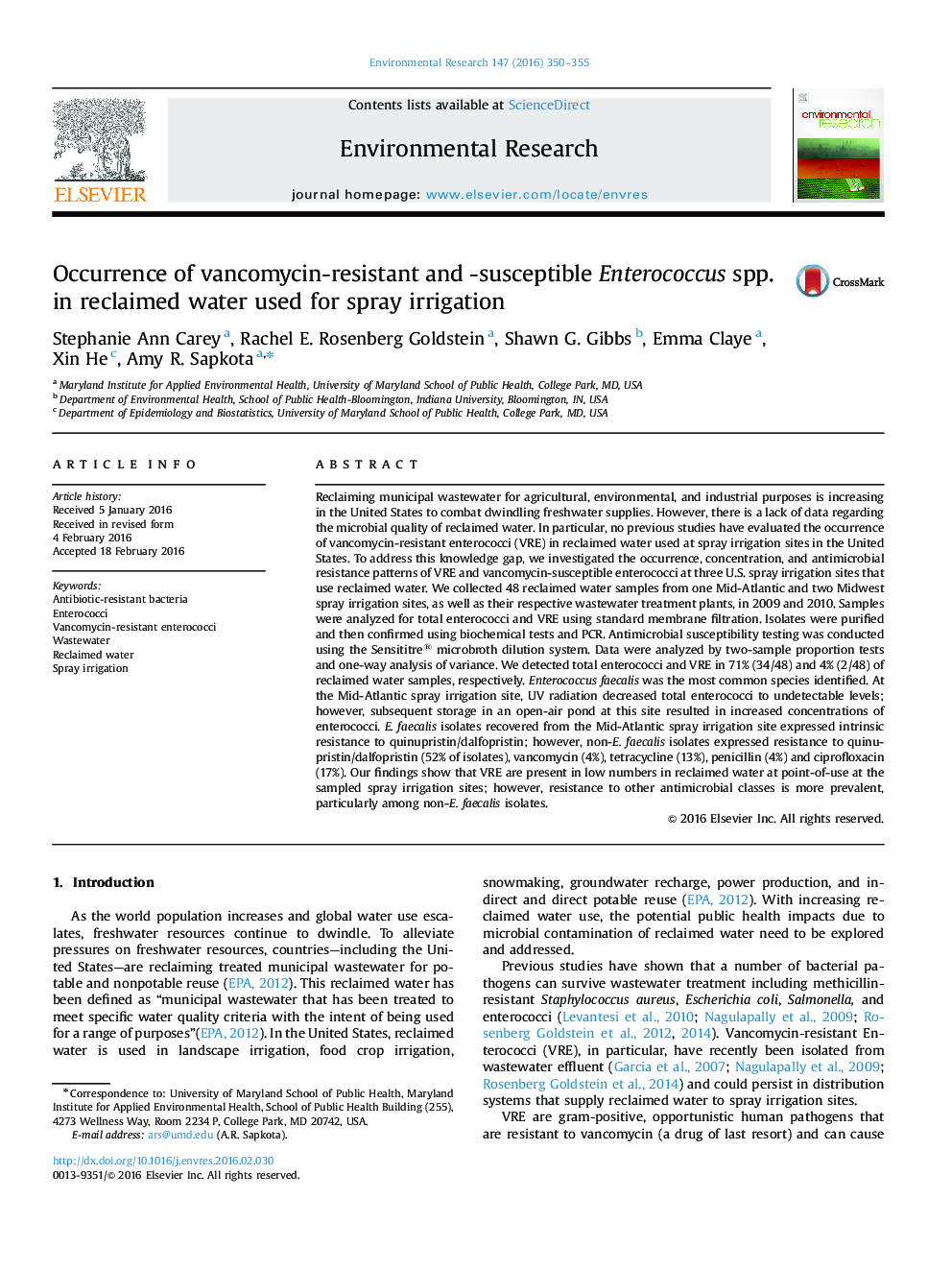| Article ID | Journal | Published Year | Pages | File Type |
|---|---|---|---|---|
| 6351708 | Environmental Research | 2016 | 6 Pages |
Abstract
Reclaiming municipal wastewater for agricultural, environmental, and industrial purposes is increasing in the United States to combat dwindling freshwater supplies. However, there is a lack of data regarding the microbial quality of reclaimed water. In particular, no previous studies have evaluated the occurrence of vancomycin-resistant enterococci (VRE) in reclaimed water used at spray irrigation sites in the United States. To address this knowledge gap, we investigated the occurrence, concentration, and antimicrobial resistance patterns of VRE and vancomycin-susceptible enterococci at three U.S. spray irrigation sites that use reclaimed water. We collected 48 reclaimed water samples from one Mid-Atlantic and two Midwest spray irrigation sites, as well as their respective wastewater treatment plants, in 2009 and 2010. Samples were analyzed for total enterococci and VRE using standard membrane filtration. Isolates were purified and then confirmed using biochemical tests and PCR. Antimicrobial susceptibility testing was conducted using the Sensititre® microbroth dilution system. Data were analyzed by two-sample proportion tests and one-way analysis of variance. We detected total enterococci and VRE in 71% (34/48) and 4% (2/48) of reclaimed water samples, respectively. Enterococcus faecalis was the most common species identified. At the Mid-Atlantic spray irrigation site, UV radiation decreased total enterococci to undetectable levels; however, subsequent storage in an open-air pond at this site resulted in increased concentrations of enterococci. E. faecalis isolates recovered from the Mid-Atlantic spray irrigation site expressed intrinsic resistance to quinupristin/dalfopristin; however, non-E. faecalis isolates expressed resistance to quinupristin/dalfopristin (52% of isolates), vancomycin (4%), tetracycline (13%), penicillin (4%) and ciprofloxacin (17%). Our findings show that VRE are present in low numbers in reclaimed water at point-of-use at the sampled spray irrigation sites; however, resistance to other antimicrobial classes is more prevalent, particularly among non-E. faecalis isolates.
Keywords
Related Topics
Life Sciences
Environmental Science
Health, Toxicology and Mutagenesis
Authors
Stephanie Ann Carey, Rachel E. Rosenberg Goldstein, Shawn G. Gibbs, Emma Claye, Xin He, Amy R. Sapkota,
